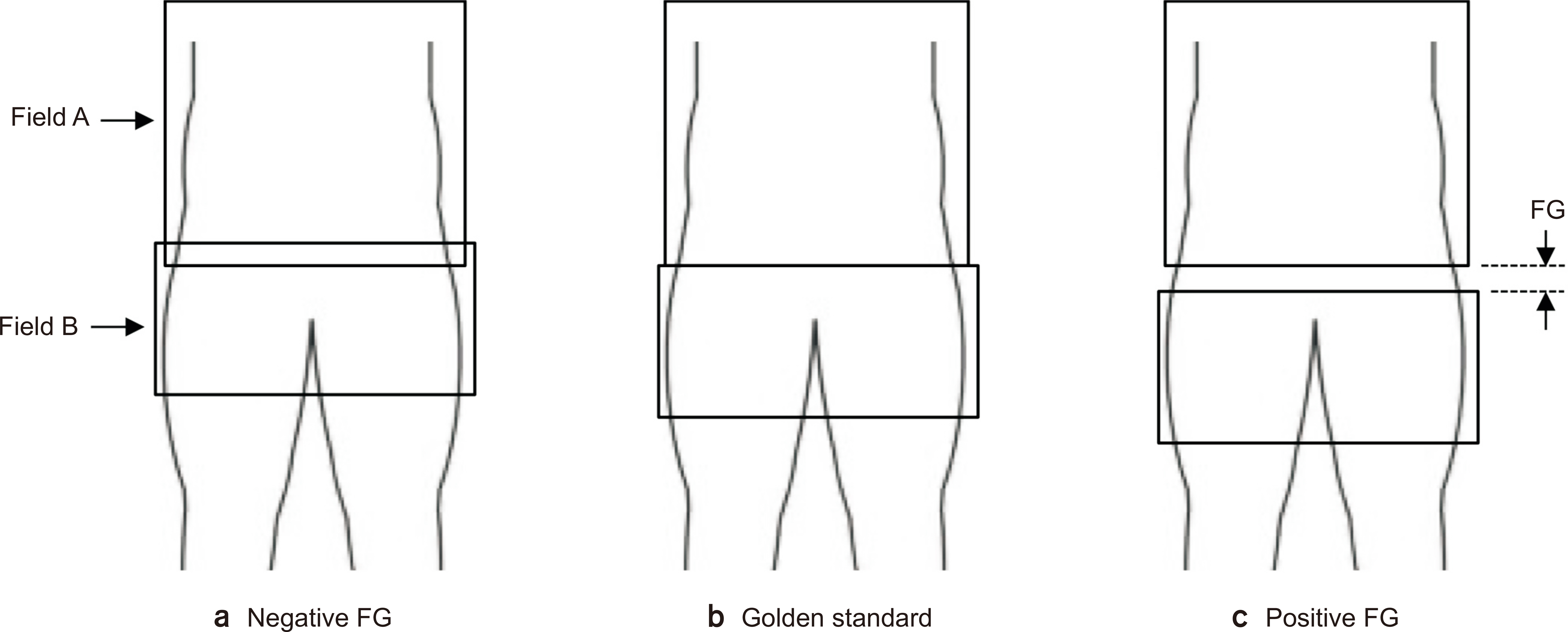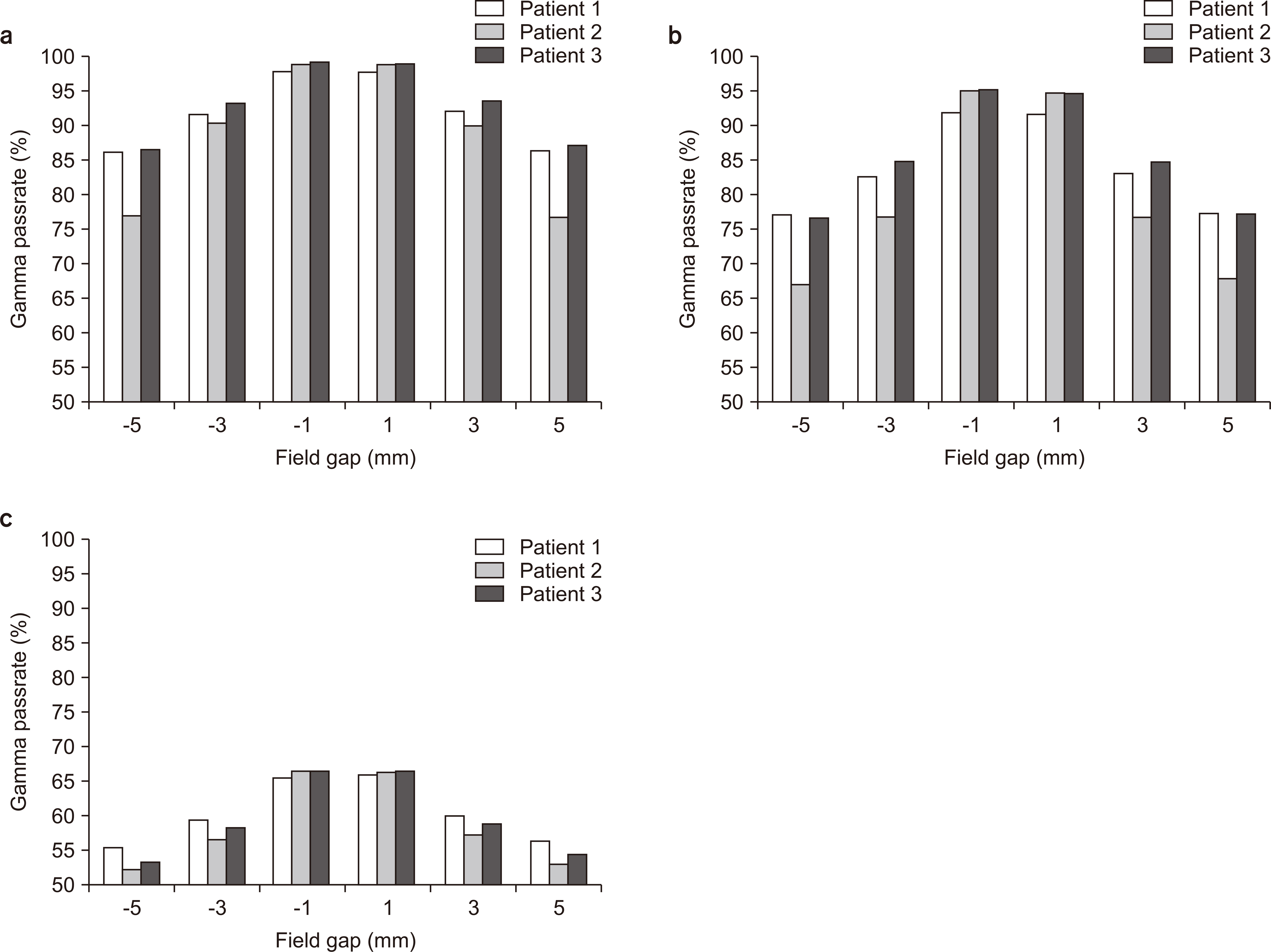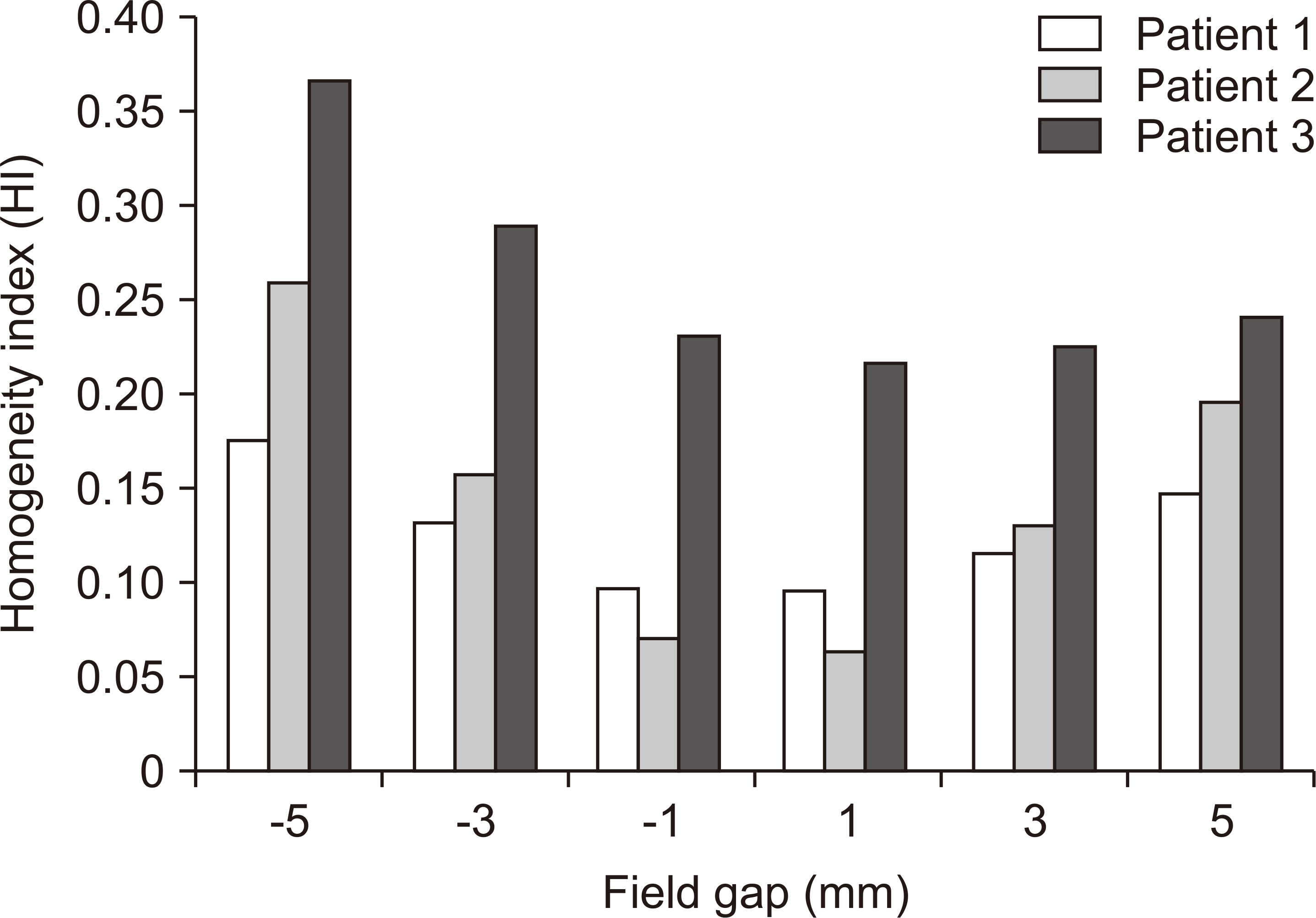Prog Med Phys.
2024 Jun;35(2):52-57. 10.14316/pmp.2024.35.2.52.
Simulating the Effect of Junction Setup Error in Dual-Isocentric Volumetric Modulated Arc Therapy for Pelvic Radiotherapy with a Large Target
- Affiliations
-
- 1Department of Radiation Oncology and Research Institute for Convergence of Biomedical Science and Technology, Pusan National University Yangsan Hospital, Yangsan, Korea
- 2Department of Radiation Oncology, Pusan National University School of Medicine, Yangsan, Korea
- 3Department of Radiation Oncology, Pusan National University Hospital, Busan, Korea
- KMID: 2557169
- DOI: http://doi.org/10.14316/pmp.2024.35.2.52
Abstract
- Purpose
The use of two adjacent radiation beams to treat a lesion that is larger than the maximum field of a machine may lead to higher or lower dose distribution at the junction than expected. Therefore, evaluation of the junction dose is crucial for radiotherapy. Volumetric modulated arc therapy (VMAT) can effectively protect surrounding normal tissues by implementing a complex dose distribution; therefore, two adjacent VMAT fields can effectively treat large lesions. However, VMAT can lead to significant errors in the junction dose between fields if setup errors occur due to its highly complex dose distributions.
Methods
In this study, setup errors of ±1, ±3, and ±5 mm were assumed during radiotherapy for treating large lesions in the lower abdomen, and their effects on the treatment dose distribution and target coverage were analyzed using gamma pass rate (GP) and homogeneity index (HI). All studies were performed using a computational simulation method based on our radiation treatment planning software.
Results
Consequently, when the setup error was more than ±3 mm, most GP values using a 3%/3-mm criterion decreased by <90%. GP was independent of the direction of the field gap (FG), whereas HI values were relatively more affected by negative values for FG.
Conclusions
Therefore, the size and direction of setup errors should be carefully managed when performing dual-isocentric VMATs for large targets.
Keyword
Figure
Reference
-
References
1. Cao F, Harrop S, Cooper N, Steiner P, Karvat A. 2017; The dose junction issue associated with photon beams for large volume radiation therapy and the sensitivity to set-up error. J Med Phys Appl Sci. 2:8.2. Zhou Y, Ai Y, Han C, Zheng X, Yi J, Xie C, et al. 2020; Impact of setup errors on multi-isocenter volumetric modulated arc therapy for craniospinal irradiation. J Appl Clin Med Phys. 21:115–123. DOI: 10.1002/acm2.13044. PMID: 33070426. PMCID: PMC7700930.
Article3. Prabhu RS, Dhakal R, Piantino M, Bahar N, Meaders KS, Fasola CE, et al. 2022; Volumetric modulated arc therapy (VMAT) craniospinal irradiation (CSI) for children and adults: a practical guide for implementation. Pract Radiat Oncol. 12:e101–e109. DOI: 10.1016/j.prro.2021.11.005. PMID: 34848379.
Article4. Morrison CT, Symons KL, Woodings SJ, House MJ. 2017; Verification of junction dose between VMAT arcs of total body irradiation using a Sun Nuclear ArcCHECK phantom. J Appl Clin Med Phys. 18:177–182. DOI: 10.1002/acm2.12208. PMID: 29082594. PMCID: PMC5689932.
Article5. Semenenko VA, Reitz B, Day E, Qi XS, Miften M, Li XA. 2008; Evaluation of a commercial biologically based IMRT treatment planning system. Med Phys. 35:5851–5860. DOI: 10.1118/1.3013556. PMID: 19175141.
Article6. Teoh M, Clark CH, Wood K, Whitaker S, Nisbet A. 2011; Volumetric modulated arc therapy: a review of current literature and clinical use in practice. Br J Radiol. 84:967–996. DOI: 10.1259/bjr/22373346. PMID: 22011829. PMCID: PMC3473700.
Article
- Full Text Links
- Actions
-
Cited
- CITED
-
- Close
- Share
- Similar articles
-
- Dosimetric Comparison of Three-Dimensional Conformal, Intensity-Modulated Radiotherapy, Volumetric Modulated Arc Therapy, and Dynamic Conformal Arc Therapy Techniques in Prophylactic Cranial Irradiation
- Dosimetric Analysis on the Effect of Target Motion in the Delivery of Conventional IMRT, RapidArc and Tomotherapy
- Dosimetric Characteristics of Multileaf Collimator-based Intensity-modulated Arc Therapy for Stereotactic Radiosurgery
- Minimization of Treatment Time Using Partial-Arc Volumetric Modulated Arc Therapy with Bladder Filling Protocol for Prostate Cancer
- Sinonasal teratocarcinosarcoma treated with surgery followed by volumetric modulated radiotherapy: a case report with review of literature





